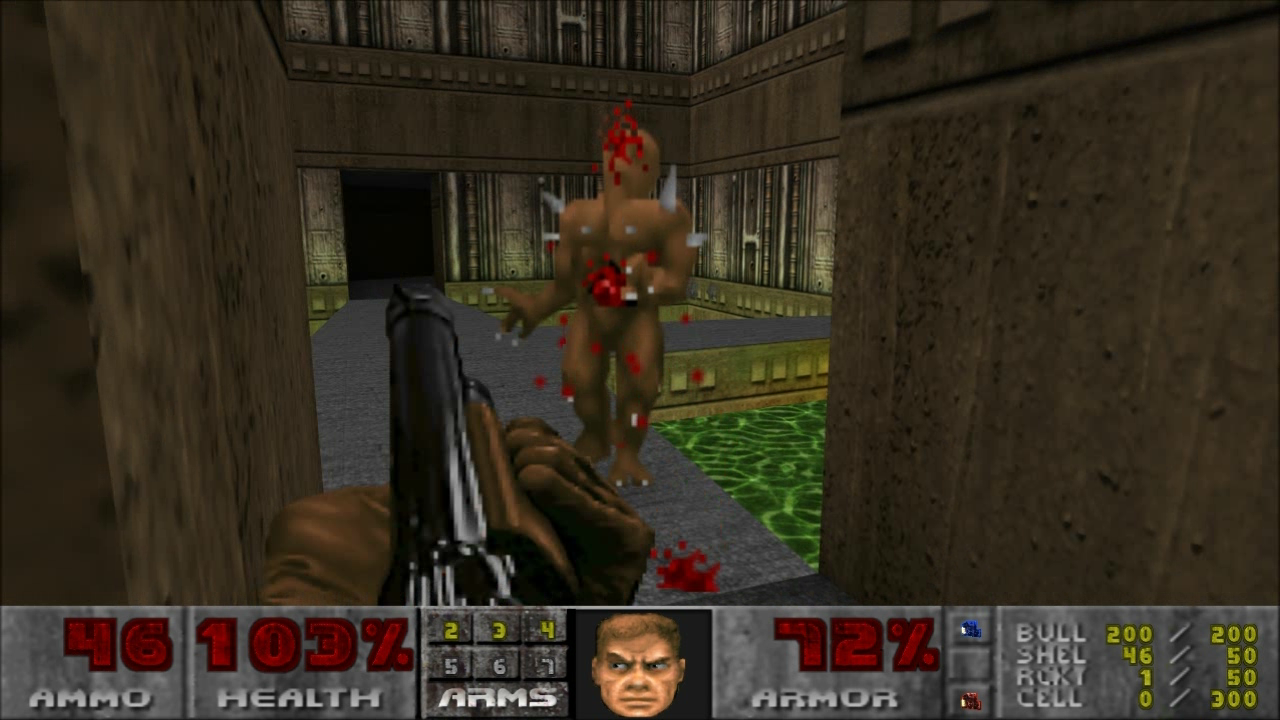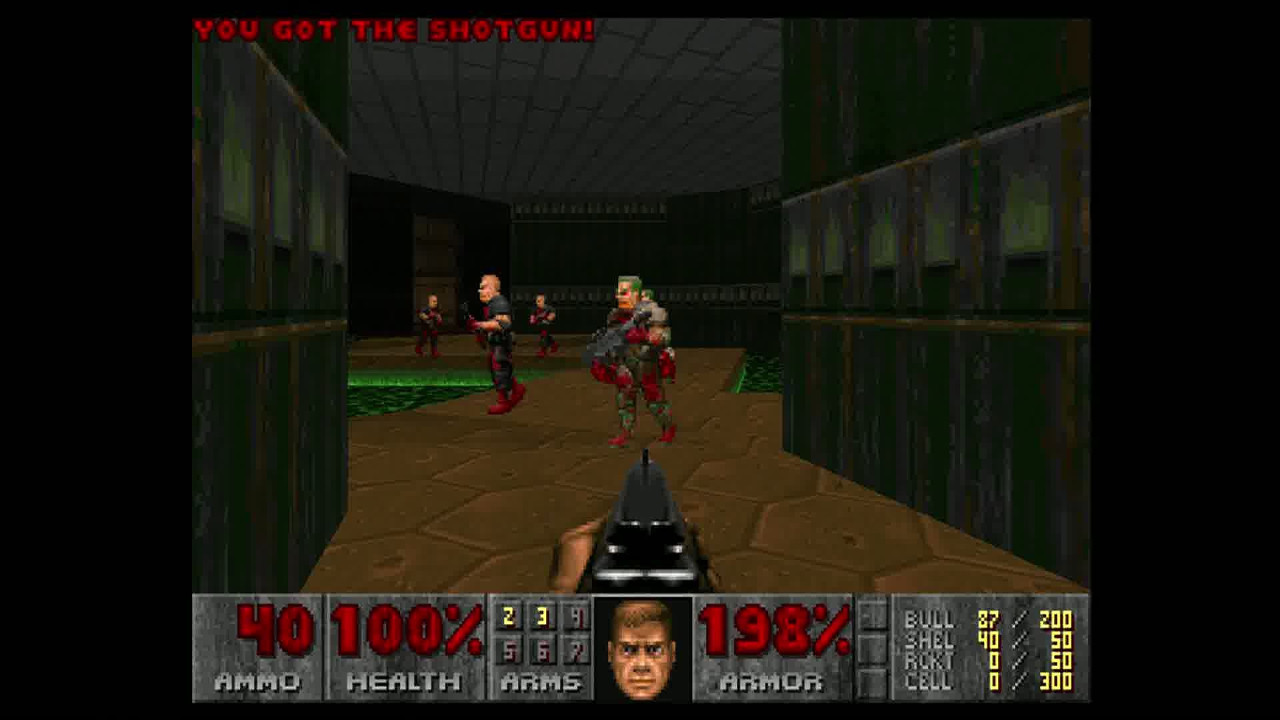Doom: A bloody history
Before Doom there was, erm, Doom

Last week saw the return of one of the most influential video game franchises in the entire history of gaming: Doom. This may be the first time some gamers will even get their hands on a Doom game but 23 years ago Doom released and started a revolution that would shape the gaming landscape for decades to come.
Doom was a phenomenon.
It all began in Mesquite, Texas with a band of cocky young guys who were enjoying the insane success of their ballsy selection of games from the colourful and charismatic platform series Commander Keen to the addictive and violent technological marvel that was Wolfenstein 3D.
Id Software led by the coding genius of John Carmack and the design flair of John Romero had carved a swathe of destruction through the game development world, laughing off a lucrative offer from the publishing giant that was Sierra off the back of the success of Commander Keen before moving on to raking in six figures a month upon the release of Wolfenstein 3D.
Time was moving on though and the boys at id had become bored of Nazis and planned to do something more interesting. They were intrigued by the idea of doing an Aliens game but the idea of ceding creative control to Hollywood bigwigs was out. They’d already turned down Sierra so why would they let anyone else tell them how to make a game?
Instead, as Romero had been bewitched by Sam Raimi’s off kilter horror movie Evil Dead II, they settled on the idea of hell versus technology. The name came from what Tom Cruise called his pool cue in the Scorcese hustler movie The Colour of Money. It was called Doom.

For its time, Doom was ground breaking. It not only introduced the world to the pace and brutality of proper first-person gaming, it introduced a whole load of different technologies that pushed game development to new heights.
The latest news, features and interviews direct to your inbox, from the global home of alternative music.
Diminished lighting for instance allowed id for the first time to use fading light to create perspective. The team also used scanned images to create much of the game’s artwork. The enemies were sculpted out of clay and shot from several different angles to aid animation. Textures were scanned images too. Adrian Carmack, Doom’s art director scanned a pair of snakeskin boots to help him create some of the game’s warped environments. Textures were even based on images of a bloody wound on the knee of Adrian Carmack’s creative counterpart Kevin Cloud.
And there were windows. Windows! And strobing lights. Combine these with the Doom engine’s abilities to create stairs and ramps, walls of varying heights and rooms based on shapes other than rectangles and Doom really set players’ heads spinning.
All this rolled together with a blistering pace of play that even modern games struggle to replicate made Doom a unique and genre-shaping experience that would be imitated for decades to come but rarely matched.
The design philosophy was all based around John Romero’s obsession with the flow of a level. While making Wolfenstein 3D he would speed-run the levels using mouse and keyboard control. He managed to get the first episode - all 10 levels of it – completed in five minutes flat.
Then there was the multi-player. For the first time in any game id incorporated the ability to play against up to four other players over a local area network and two players could even battle over the internet.

On January the 1st, 1993 id Software released a press release. It read:
“Heralding another technical revolution in PC programming id Software’s Doom promises to push back the boundaries of what was thought possible on computer…. In Doom you play one of four off-duty soldiers suddenly thrown into the middle of an inter-dimensional war! Stationed at a scientific research facility, your days are filled with tedium and paperwork. Today is a bit different. Wave after wave of demonic creatures are spreading through the base, killing or possessing everyone in sight. As you stand knee-deep in the dead, your duty seems clear – you must eradicate the enemy and find out where they came from. When you find out the truth, your sense of reality may be shattered!”
After talking up the new multi-player features the press release rounded off saying, “We fully expect to be the number one cause of decreased productivity in businesses around the world!”
This was a game that allowed John Romero to find his design voice. As development moved on the levels got more and more twisted. The weaponry came to life bit by bit with the piece-de-resistance being the BFG (or Big F**king Gun) which could clear a room of enemies in one shot. Levels flew together and Wolfenstein sound designer Bobby Prince rejoined the team to create Doom’s iconic techno-metal soundtrack that even included a nod to Pantera’s Mouth For War in the music for Episode 3 Mission 1.
Development on Doom began at the end of 1992. On the 10th of December, 1993 Doom was ready for release and id Software had chose to distribute the first episode, Knee Deep In The Dead as free shareware. They announced that it would be available on disc at retailers but it would also be available to download from the University Of Wisconsin’s file server via FTP (file transfer protocol).
Midnight came on December the 10th and id went to upload the file to the University of Wisconsin’s servers only to find that the access queue, which only held room for 125 users. Eager gamers were queuing up clamouring for Doom to hit the server so they could download it. They began getting impatient until id jumped online to say that they needed to boot everyone in the queue off so they could get the file uploaded.
After half an hour Doom had been uploaded and the hordes descended. 10,000 gamers descended on the site trying to download Doom. The weight of traffic was too much for the university’s FTP server to handle and it crashed. It was the first time demand for a game had crashed the infrastructure providing it – although it wouldn’t be the last.

Doom circulated for years as shareware selling over a million copies in the process and being played on a great many more machines. It would finally see a retail release in 1995 as Ultimate Doom, a year after Doom II: Hell On Earth was released.
Since then it has been ported to no less than 10 different formats that range from the Symbian OS that powered early Nokia and Sony Ericsson smart phones to the Xbox 360 and PS3.
It was even ported to Windows 95 in an effort by Microsoft to show gamers the merits of switching to their glossy new operating system. This included a marketing push that featured a Doom-themed promo starring none other than Bill Gates himself.
Fast-forward back to the present day and we have a brand new Doom game in our hands. None of the original developers were involved in its making although id Software has put in overtime (it’s been eight years since the new Doom was announced as Doom 4) to make sure that it captures the spirit of the original release way back in 1993.
Doom is out now on PC, PS4 and Xbox One and stay tuned later in the week for our review to see if it has succeeded in capturing the demonic spirit of the original games. If you can get your hands on and Xbox 360 both Doom and Doom II are available on Xbox Live and as part of Doom III: BFG Edition which is also out on the PS3.
If you want to know more about the history of the guys behind Doom you can read Masters Of Doom by David Kushner which is a fascinating read.
